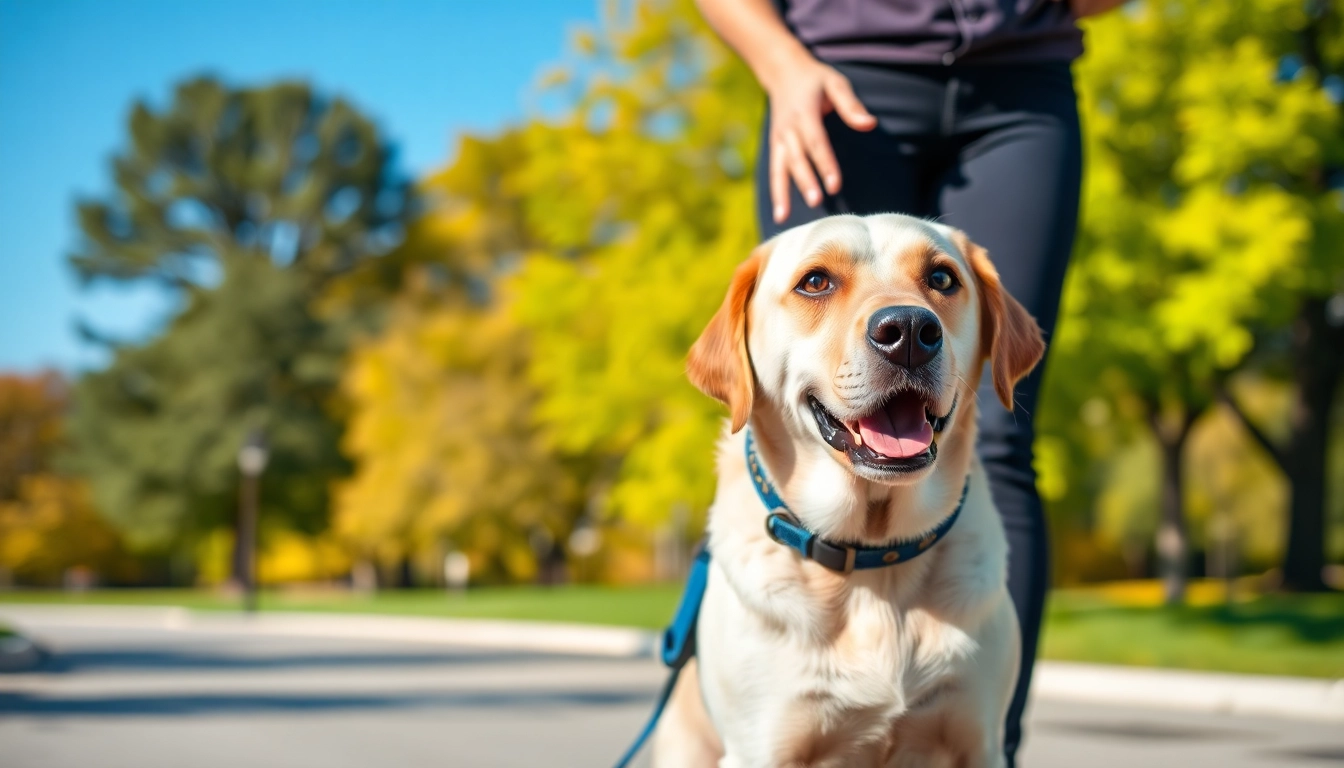Understanding Service Dogs and Their Importance
Service dogs play a vital role in enhancing the quality of life for individuals with disabilities. They are specially trained to assist their handlers in performing daily tasks, providing independence, safety, and companionship. The process to buy a service dog is critical for many and requires careful consideration of various factors, including the type of service needed and the kind of training the dog has undergone.
What Are Service Dogs?
Service dogs are defined as trained canines that help individuals with disabilities perform tasks that they may find difficult or impossible to do on their own. Under the Americans with Disabilities Act (ADA), service dogs are considered working animals, not pets, and they have full access rights to all public places, including stores, restaurants, and other venues where pets are not typically allowed.
Types of Service Dogs and Their Roles
There are several types of service dogs, each designed to assist with specific disabilities and tasks. Some of the most common types include:
- Mobility Assistance Dogs: These dogs help individuals with physical disabilities by providing support with walking, retrieving items, and performing tasks such as opening doors.
- Guide Dogs: Specifically trained to assist individuals with visual impairments, guide dogs help navigate obstacles and ensure safety while walking.
- Medical Alert Dogs: These dogs are trained to alert their handlers to medical emergencies, such as seizures or low blood sugar levels.
- Psychiatric Service Dogs: These canines assist individuals with mental health issues by providing comfort during anxiety attacks, reminding them to take medications, or helping them navigate stressful situations.
- Autism Support Dogs: Trained to assist children and adults with autism spectrum disorders, these dogs can help with emotional support, sensory overload, and establishing routine.
Benefits of Having a Service Dog
The benefits of having a service dog are numerous. They not only provide physical assistance but also enhance the emotional and mental wellbeing of their handlers. Their presence can lead to:
- Increased Independence: Service dogs empower their handlers to accomplish tasks they may otherwise find challenging.
- Improved Safety: They can help prevent accidents and manage emergency situations, offering peace of mind to both handlers and their families.
- Companionship: Beyond their working capabilities, service dogs provide unconditional love and companionship, which can help alleviate feelings of isolation.
- Social Inclusion: With the legal rights to accompany their handlers in public, these dogs can help foster social interactions and community engagement.
Steps to Buy a Service Dog
Purchasing a service dog is a significant commitment that entails several steps. When looking to buy a service dog, it’s crucial to approach the process methodically.
Identifying Your Needs and Preferences
Before diving into the purchase, assess your needs and preferences. Ask yourself the following questions:
- What specific tasks do I require assistance with?
- Do I have a preference for a particular breed or size of dog?
- How much time and effort am I willing to invest in training and care?
- Are there any allergies or sensitivities to consider?
Understanding your needs will guide you in selecting the right type of service dog suited to your lifestyle and requirements.
Researching Breeds and Training Programs
Different breeds exhibit varying characteristics and temperaments that may fit your specific needs. Research breeds that are commonly used as service dogs, such as Golden Retrievers, Labrador Retrievers, and Poodles, among others. It’s also essential to look into training programs, ensuring they follow recognized standards and practice humane techniques.
Seek programs accredited by organizations such as Assistance Dogs International (ADI), which ensures that the training meets essential requirements and practices.
Finding Reputable Breeders and Organizations
Once you’ve identified your needs and researched breeds and training programs, the next step is to find reputable breeders or organizations that place service dogs. Look for breeders who are knowledgeable about service dog training and health testing procedures. Similarly, organizations that focus on service dog training should provide transparent information about their methods, success statistics, and post-placement support.
Online reviews, testimonials from previous clients, and referrals from local communities can also help you filter your choices.
Costs Involved in Buying a Service Dog
The costs associated with acquiring a service dog can vary significantly based on training, breed, and additional services required. Understanding these costs is crucial for effective financial planning.
Initial Purchase Price Breakdown
The initial purchase price of a service dog can range from several thousand dollars to upwards of twenty thousand dollars or more. Factors that influence this price include:
- The dog’s age and breed.
- The extent of training the dog has received.
- Geographical location and availability of trained service dogs.
Be sure to ask what is included in the purchase price, as many programs include a comprehensive training program for both the dog and the handler, which may involve additional costs over time.
Training and Maintenance Costs
In addition to the purchase price, ongoing training and maintenance costs should be factored in. Training can be an essential ongoing process, as service dogs may need to learn additional tasks or refresh their training. Maintenance costs may include:
- Routine veterinary care, including vaccinations, check-ups, and preventative medications.
- High-quality food and supplies.
- Grooming, especially for breeds that require regular upkeep.
- Professional training sessions or workshops for handlers.
Financing Options and Assistance Programs
While the costs can be daunting, several financing options and assistance programs are available to help alleviate some of the financial burden. Research local and national grants, non-profits, and funding organizations that support individuals acquiring service dogs. Payment plans with training facilities can also ease upfront costs and spread out expenses over time.
Legal Considerations When Buying a Service Dog
Understanding the legal landscape surrounding service dogs is crucial for both potential handlers and breeders. The following sections break down the key legal considerations involved when looking to buy a service dog.
Understanding ADA Regulations
The Americans with Disabilities Act (ADA) outlines the rights of service dog handlers and the responsibilities of service animals. Under this law, businesses are required to allow service dogs to accompany their handlers in all public areas. It’s important to understand the definition of a service dog under the ADA, as it is distinct from therapy or emotional support dogs.
Registration and Identification Requirements
While the ADA does not require service dogs to be registered or wear identification, many communities have different regulations. It can be beneficial to have documentation regarding the dog’s training and your disability needs, as this may ease entry into various public spaces or establishments.
Rights and Responsibilities of Service Dog Handlers
Handlers have specific rights under the ADA, including the right to access public places with their service dog. However, they also hold responsibilities like ensuring their dogs are well-behaved and do not disrupt others. Understanding these rights and responsibilities is essential for fostering a positive relationship with the community and ensuring public acceptance of service dogs.
Training Your Service Dog for Maximum Effectiveness
Successful integration of a service dog into a handler’s life goes beyond purchasing; training is a critical component. Training not only ensures that the dog can complete tasks but also fosters a strong bond between the dog and the handler.
Basic Training Techniques
Initially, service dogs must master basic commands such as sit, stay, and come. These commands form the foundation for more advanced training. Positive reinforcement techniques, such as treats and verbal praise, are effective tools used to motivate dogs during training.
Advanced Tasks and Specializations
Once basic commands are learned, training progresses to specialized tasks tailored to the handler’s specific needs. For example, a medical alert dog may be trained to recognize subtle changes in a handler’s behavior before a seizure occurs. In contrast, anxiety service dogs might be trained to provide specific physical cues, such as nudging the handler, when anxiety symptoms arise.
Continued Learning and Socialization Practices
Ongoing training and socialization are vital for a service dog’s effectiveness. Engaging them in different environments and exposing them to various sounds, sights, and smells will help them remain composed in public settings. Regular training refreshers and socialization can ensure the dog remains well-adjusted and effective in their service roles throughout their life.



